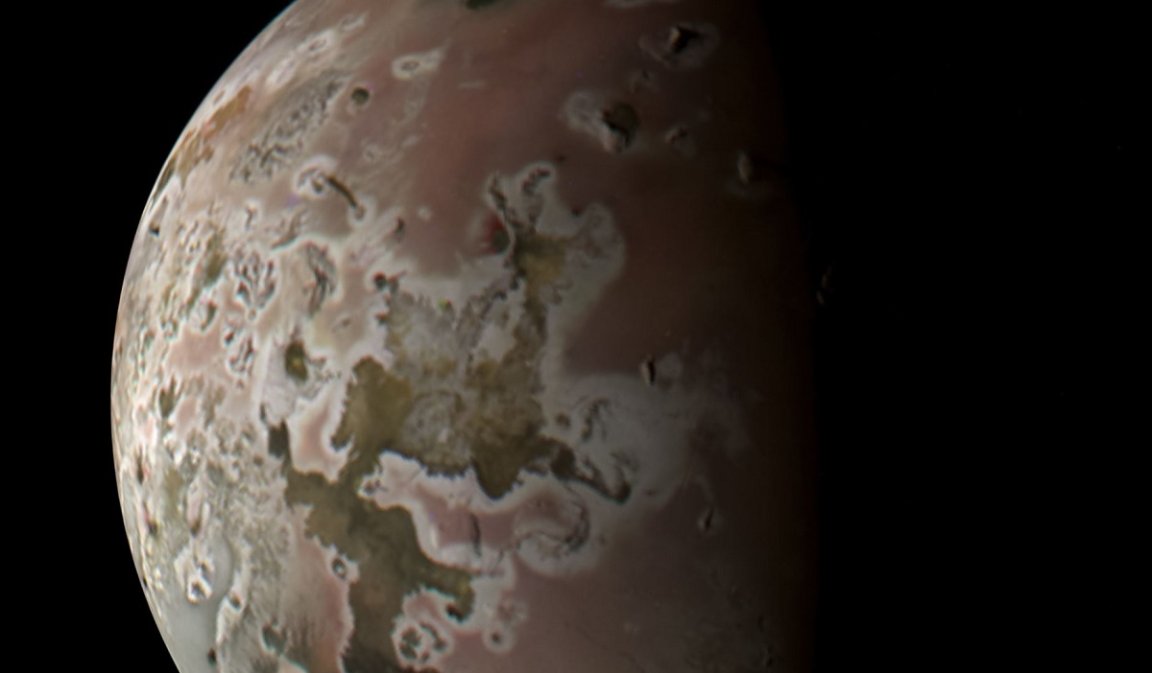
By Jove
Since it arrived at Jupiter’s orbit in 2016, NASA’s Juno probe has been gathering rich images and data from the largest planet in our Solar System and its many moons.
Add to that cache some awesome, just-released pictures of Io, the most volcanically active object in our star system. Juno made a flyby of the Jovian moon on October 15 and captured images of Io with its JunoCam camera from as close as just 7,260 miles from the moon’s surface. These new pictures yielded increased pictorial details of Io’s north pole, which has non-volcanic mountains that can reach as high as 20,000 feet. By comparison, Earth’s highest point above sea level, Mount Everest, measures at more than 29,000 feet.
In addition, the satellite took images of Io’s fiery surface, which is pockmarked with hundreds of volcanoes and flowing fields of lava. In fact, the satellite even captured two active volcano plumes — a spectacular find for Juno, which first launched back in 2011.
NASA considers these images the best depiction of Io in more than 20 years, since the space agency’s Galileo satellite beamed the first close-up images of Io back to Earth.
Fiery Realm
Io is the fifth farthest moon from Jupiter and is a tad larger than our own moon, according to NASA. The piebald, scarred world is caught between the strong gravitational pull of Jupiter and fellow moons Europa and Ganymede, resulting in a fiery interior and hence the many volcanoes we see on its surface.
We’ll get to see more of Io in the future when Juno makes another flyby of the moon this December and February of next year, according to NASA.
“Io is the most volcanic celestial body that we know of in our solar system,” said Scott Bolton, Associate Vice President of the Southwest Research Institute’s Science and Engineering Division in San Antonio and Juno’s principal investigator, in a statement earlier this year. “By observing it over time on multiple passes, we can watch how the volcanoes vary – how often they erupt, how bright and hot they are, whether they are linked to a group or solo, and if the shape of the lava flow changes.”
More on Juno: NASA’s Juno Probe Creates Stunning Map of Jupiter’s Largest Moon